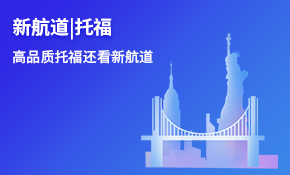【双语阅读】阿姆斯特丹:经历辉煌与战争的自由之城
DURING its rise in the 17th century, Amsterdam was animportant haven for religious dissidents. It was also the publishing centre forthe racyphilosophical tracts that were too hot to be printed in France or England. The city’s economicfortunes were born of its embrace of international trade and of financialinnovation. And the highly profitable Dutch East IndiaCompany was the world’s first joint-stock company, leading in time to theworld’s first stock and options markets.
在17世纪崛起期间,阿姆斯特丹是宗教异议分子的重要避难所,也是激进哲学册子的出版中心,因为这些册子过于惹火而不能在法国和英国出版。国际贸易和金融创新为这座城市带来了经济财富。荷兰东印度公司作为世界上首家股份公司,有着很高的盈利水平,它开创了世界上股票和期权市场。
In the late 20th century the Dutch capitalwas famous for its tolerance of marijuana cafés and prostitution. But Amsterdam’s liberalheritage has become a battleground. The murder by an Islamist fanatic of Theovan Gogh, a controversial film-maker, in 2004 sparked clashes over relationswith the city’s Muslim minority. City planners have shifted from a socialistvision of liberalism to a yuppified one, rooting out squatters and shrinkingthe red-light district while courting multinational corporations withfavourable tax conditions.
20世纪末,阿姆斯特丹因容许咖啡馆出售大麻和卖淫现象的存在而。但是阿姆斯特丹的自由主义传统已经使这里演变成了战场。2004年,伊斯兰狂热分子、饱受争议的电影制作人特奥·梵高制造的谋杀案引发了(伊斯兰)同穆斯林少数民族之间的冲突。城市规划师的视角已经从社会主义者的自由主义过渡到雅皮化,在根除棚户区和缩小红灯区的同时,用优惠的税收条件吸引跨国公司的到来。
Mr Shorto, an American who has lived in theDutch capital for six years, sprinkles the book with personal anecdotes thatillustrate how history suffuses the present. While studying the journal of anAugustinian prior who had fled to the city to escape the religious violence ofthe Netherlands’war of independence, the author realises that the diary was written, in 1572,next door to his flat. To illustrate a later episode of religious conflict, heintroduces the reader to a Holocaust survivor, a childhood acquaintance of Anne Frank. His account of Amsterdam’s physical growth is just asengrossing. The ring of canals, which visitors nowadays think of as quaint,were a marvel of engineering when they were built in the 1600s, a testament tothe city’s status as Europe’s premier trading entrepot.
索托先生(Mr Shorto)是一位已在荷兰首都生活了6个年头的美国人,他的书中都是阐明现时阿姆斯特丹弥漫着历史印记的个人轶事。在研究先前一名逃离到阿姆斯特丹躲避荷兰独立战争宗教暴力的奥古斯丁修会会士写的日记时,索托先生发现该日记写于1572年,记录地点就位于他公寓的隔壁。为了阐述下一场宗教冲突,他向读者介绍了大屠杀中的一名幸存者、安妮·弗兰克(Anne Frank)的童年朋友。他记录的阿姆斯特丹有形发展也同样引人入胜。如今让游客们觉得怪异的运河回荡声,是17世纪建造它们的设计师们创造的工程奇迹,这证明了阿姆斯特丹作为欧洲最早的贸易中心的地位。
But Mr Shorto’s main ambition is to showhow the liberal idea was born in Amsterdam.He leans here on the recent work of Jonathan Israel, a British-born professorof modern European history at Princeton, whose influential three-volumerethinking of the Enlightenment gives a central place to Amsterdam’s most famous philosopher, BaruchSpinoza. For Mr Israel,Spinoza was the progenitor of the “radical” Enlightenment, those thinkers whorefused any accommodation with religion or traditional authority. It isinteresting to consider Amsterdam’s currenttensions in the light of the struggles Spinoza witnessed between tolerantrationalism and religious nationalism, which ended with the lynching in 1672 ofhis political heroes, the De Witt brothers, and the end of Holland’s Golden Age.
但是索托先生主要的目的在于告诉人们自由主义思想是如何在阿姆斯特丹诞生的。在书中,他借助了出生于英国的普林斯顿大学欧洲现代史教授乔纳森·伊斯雷尔最近发表的作品,伊斯雷尔具有影响力的启蒙运动反思三大卷奠定了阿姆斯特丹最负盛名的哲学家巴鲁赫·斯宾诺莎的中心地位。对于伊斯雷尔先生来说,斯宾诺莎是“激进”启蒙运动的先驱,这些思想家们与宗教或传统权威不可相容。从斯宾诺莎目睹的宽容理性主义和宗教民族主义之间斗争的角度来看阿姆斯特丹当前的紧张局势是很有趣的,两者的斗争以他的政治英雄德威特兄弟在1672年被处以私刑以及荷兰黄金时代的终结而告终。















